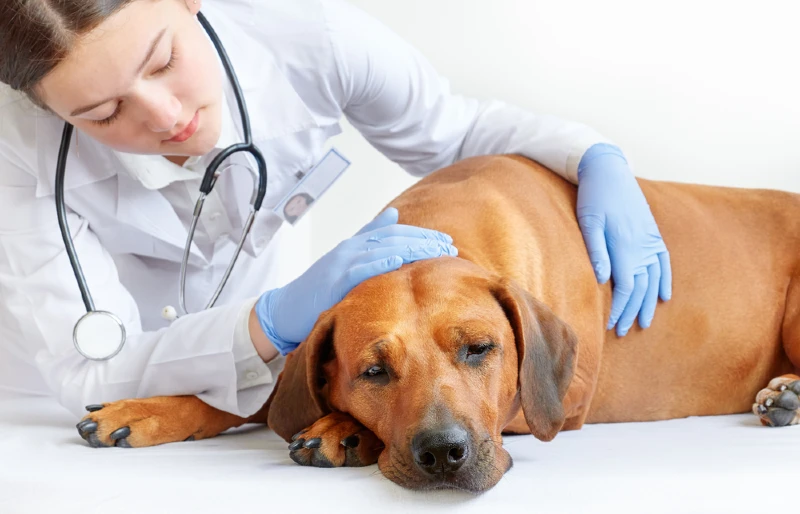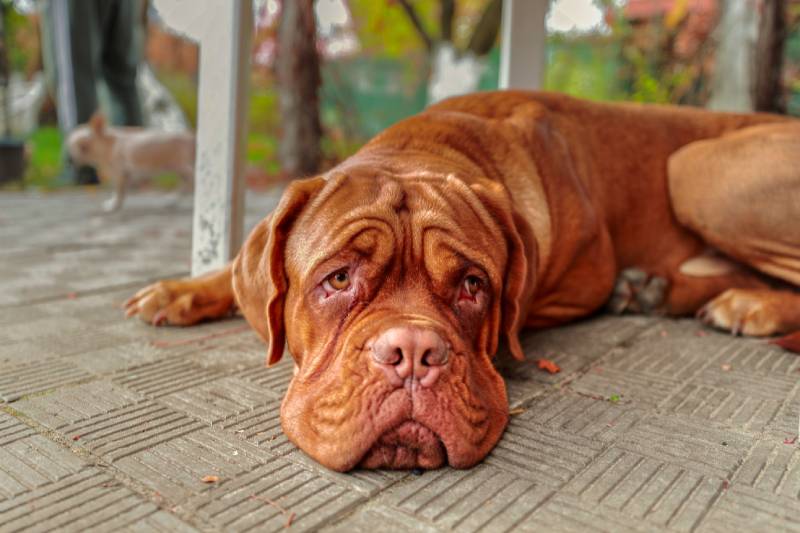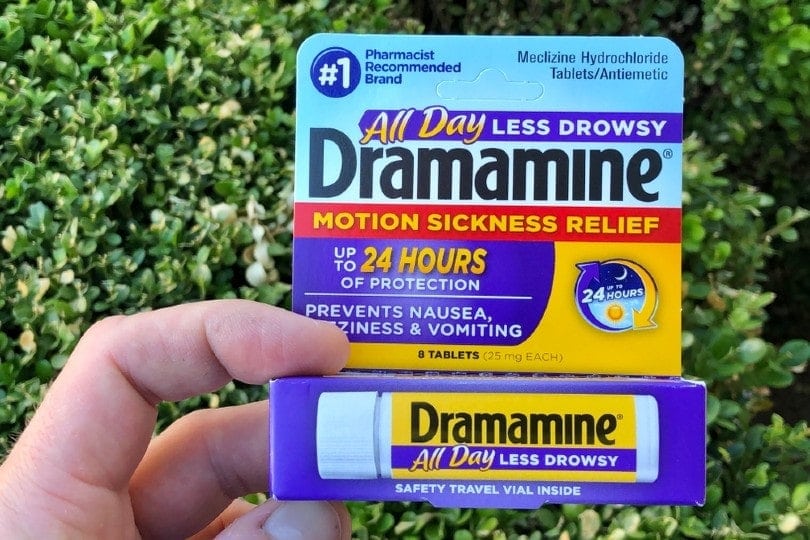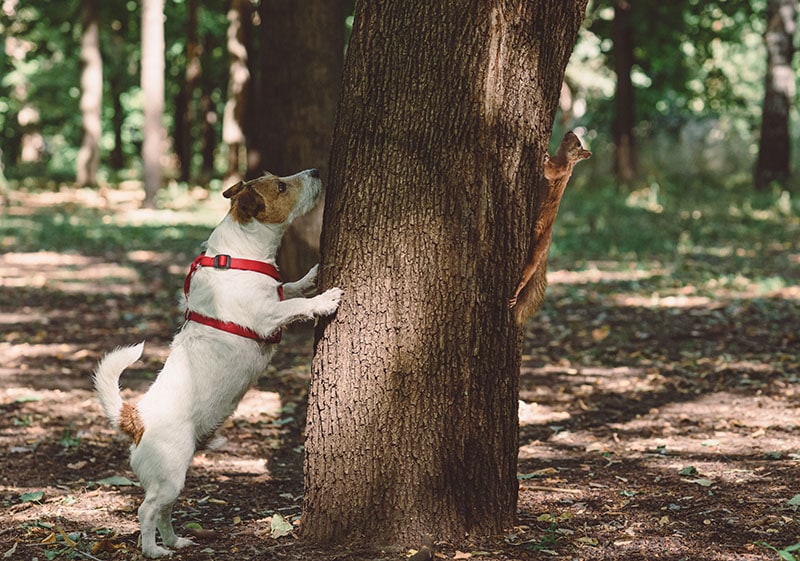My Dog Ate Rat Poison! Here’s What to Do (Vet Answer)

Updated on

It is a truth universally acknowledged that a population of humans will inevitably be accompanied by a population of rats. These resourceful, omnivorous rodents virtually domesticated themselves in order to take advantage of the wasteful habits of humans—for where there are humans, there will be scraps, rubbish, and unguarded food stores. Although the more refined version of the ubiquitous black rat has scurried its way into the hearts of many rat fanciers, they continue to create enemies by leaving droppings in kitchens, spreading disease, and costing billions by fouling grain stores.
The keeping of cats and the use of traps were the mainstays of rat control until the mid-20th century when the anticoagulant (blood thinning) agent Warfarin was put into use to control the rat population. One of the unfortunate characteristics shared by all rodenticide substances is that, in order to be ingested, they must be palatable. This is where rat control poses a problem for dogs. If it tastes good to a rat, it will likely taste good to a curious canine, and they can suffer the same fatal consequences if not treated.
Swift removal of the toxin by inducing vomiting is the first, and most effective, step in addressing rodenticide poisoning in dogs, but what if we don’t see them eat it? Can a dog survive eating rat poison? In this article, we will look at the different types of rodenticides, what to do if your dog eats rat poison, and what sort of signs to look out for in the dog that has been affected.
But before we learn more about the types of rodenticide poisoning and how they are treated, there are some steps to follow.
My Dog Ate Rat Poison! What Do I Do?
This advice applies if you know your dog has eaten the poison or if you suspect they might have:
- Don’t panic. If you rush straight to the vet, you may leave behind important information.
- Try to find out what rat poison they have eaten (bring any packaging with you), how much, and the timeframe in which they have eaten it.
- Phone your vet and advise them of what has happened so they can prioritize and prepare for your dog’s arrival.
- Before you leave, make sure any spilled rat poison is cleared away to make sure no other pets can access it.
Be aware that, in most cases, signs of toxicity will not emerge for several days, so do not assume that if your dog is not showing signs of poisoning that they are okay. Any amount of ingested rat poison can be fatal.

 The 2 Main Types of Rodenticide
The 2 Main Types of Rodenticide
Being able to identify the type of rat poison your dog has ingested is vital to knowing how to treat it, and the prognosis will also depend on the rodenticide used. There are two main formulations used:
1. Anticoagulants
Until recently, anticoagulant rodenticides have been the most commonly used rat poison. They work by stopping the liver’s production of Vitamin K1, which is an essential part of the blood clotting pathway. Within 2–4 days, spontaneous bleeding can occur in any part of the body, resulting in death shortly thereafter.
Warfarin is rarely used now due to the development of resistance in the rat population, and several others have been developed to replace it. These include brodifacoum, dopaquinone, and bromadiolone. They are usually infused with a blue or green dye to make them visually stand out to humans, but with their limited color vision, dogs are attracted to the smell, regardless of the color.
Anticoagulant rodenticides all follow the same basic strategy of Vitamin K1 inhibition but vary in their strength and speed of effect.
2. Bromethalin
In response to concerns about the ingestion of affected rats by species such as owls, hawks, or other scavenging wildlife, the use of the rodenticide Bromethalin has increased, as this requires a much smaller amount to be ingested and poses a much smaller risk to wildlife. Unfortunately, dogs are usually affected by eating the rodenticide directly, so are affected in the same way as the intended target.
Bromethalin works by blocking oxygen metabolism in the brain, and without oxygen, brain edema and death shortly follows. The reason this poison is particularly bad news for dogs is that there is no specific treatment or antidote. At high doses, the result is almost always fatal, but at lower doses, supportive treatment can lead to recovery.

How Is Rodenticide Poisoning Treated? What Is the Prognosis?
The treatment and prognosis of rodenticide poisoning hinge greatly on the type of rat poison ingested, the amount, and how long ago your dog ate it. This is why it is important to be able to provide as much information to your veterinarian as possible. Below is an outline of the treatment of poisoning for the two main types of rodenticides.

Anticoagulants (e.g., Contrac, Bait Block, Final Blox)
The treatment for anticoagulant rodenticide poisoning will depend on the time since ingestion, whether or not there are clinical signs of poisoning, and if/where any hemorrhaging has occurred. In almost all instances, the treatment involves administering Vitamin K1.
- Ingested less than 4 hours ago
- Induce emesis (vomiting).
- Feed activated charcoal every 6 hours for the next 48 hours to reduce absorption from the digestive tract.
- If confident of successful emesis of all poison, check clotting times at 72 hours post ingestion.
- If a large amount of poison was ingested, or incomplete emesis, start on Vitamin K1 therapy and check clotting times after 72 hours.
- If clotting times are prolonged, continue therapy for 2 weeks for 1st generation rodenticides (Warfarin, Coumatetralyl, Diphacinone and Chlorophacinone) and 3 weeks for 2nd generation (Brodifacoum, Bromadiolone, Difethialone and Difenacoum) and unknown types. Repeat clotting function tests at the end of treatment to ensure it is safe to stop.
- 4–12 hours ago
- Induce emesis to remove any remaining poison from the stomach, and feed activated charcoal as above.
- Treat with Vitamin K1 for 2-3 weeks, depending on the type of rodenticide ingested, and repeat clotting function tests at the end of treatment.
- More than 12 hours ago and asymptomatic
- Check clotting times and full hematology exam.
- Start on IV fluids and charcoal therapy to aid in the excretion of the toxin.
- Treat with Vitamin K1 for 2-3 weeks, depending on the type of rodenticide ingested, and repeat clotting function tests at the end of treatment.
- More than 12 hours ago and symptomatic—clinical signs can be extremely varied, depending on the severity and location of any clotting problems or hemorrhage.
- If signs are non-specific, such as petechiae (tiny hemorrhage under the surface of skin or gums), treatment will consist of IV fluids, Vitamin K1 and a more extended hospital stay to monitor clotting times and hematology.
- If signs are more specific (e.g., bleeding in chest, abdomen, etc.), treatment will need to be more targeted and may involve oxygen therapy and administering blood products such as plasma or whole blood.
Provided intervention and treatment are initiated before any catastrophic hemorrhage has occurred, the prognosis for anticoagulant rodenticide poisoning is generally good but will depend greatly on the speed of diagnosis and treatment.
Sometimes a dog can ingest rat poison without us knowing, so we will only become aware of a problem once the dog becomes unwell. In these cases, the diagnosis will depend on physical examination and blood tests. The prognosis may not be as positive in these situations as internal hemorrhaging could be quite advanced before a diagnosis can be made, and treatment initiated.
Bromethalin (eg. Fastrac Blox, Fastrac Pellets, Top Gun)
In the case of Bromethalin, the prognosis is far more guarded and will depend on the amount of poison ingested.
- If more than around 3 mg/kg has been ingested, the dose is almost always fatal within 4–36 hours post-ingestion despite even aggressive treatment.
- Rapid decontamination (emesis, charcoal, gastric lavage, and enema) may be able to reduce the effects, but the rapid onset means that treatment is rarely successful.
- With lower doses, decontamination and the use of IV fluids and medications to reduce brain swelling and neurological effects can be successful, but there may be prolonged or permanent neurological damage.
What Happens if a Dog Eats Rat Poison?

Anticoagulant Rodenticides
The difficulty in these cases is that the clinical signs will often depend on where the hemorrhage may be occurring. For example, coughing if there is bleeding in the lungs, bruising or swelling on parts of the body, or an enlarged belly if there has been bleeding into the abdomen.
- Weakness/lethargy or collapse
- Pale mucous membranes
- Shallow, rapid breathing
- Petechiae
- Ecchymoses (larger hemorrhages under the skin or mucous membranes that may appear like bruises or smears of dark blood under the surface)
- Blood in urine or feces, or very dark urine or feces
- Wounds that won’t stop bleeding
Bromethalin
Signs will usually progress quite rapidly, and reflect oxygen starvation of the brain. These include:
- Seizures
- Ataxia (wobbly walking)
- Sedation or dull mentation
- Paresis (limb weakness) or paralysis
- Coma
- Death
How to Prevent Rodenticide Poisoning
We can see that rodenticide toxicity can be extremely dangerous and even fatal for dogs, so how can we make sure our pets stay safe? The safest way to avoid accidental ingestion is to not use rodenticides at all, but even this won’t completely remove the risk. As neighboring properties may use them, your dog may ingest rats that have been affected by rodenticides, or birds have even been known to drop poisons.
How to Deal With Rats — Non-Lethal Methods
- Tolerance: This is probably the least popular option, but if your rat problem is only a minor, outdoor one, learning to live with them may be the easiest option.
- Repellants
- Varpal Rope® is a product using the same chemical as moth balls that can be laid out to repel rats
- Ultrasonic emitters
- Create a non-rat-friendly environment
- Patch holes in walls, fill in nests/burrows, and remove any rubbish piles, debris, or anything else that will be enticing to an opportunistic rodent.
- Use rat-proof food containers and make sure any food scraps are sealed away.
- If you use compost in the garden, invest in a rat-proof compost bin.
How to Deal With Rats — Lethal Methods
- If you have a real rat infestation and feel rodenticide use is your only option, be sure to use a safe, secure bait box that is kept in an area that cannot be accessed by your pets. Try to secure the bait inside the box so that it cannot be dragged out by the rats.
- Although no lethal solutions are completely without suffering, old-fashioned snap traps and modern electric shock traps are considered to be somewhat more humane than methods such as poisons, drowning traps, or glue traps, as death usually occurs instantly.
Conclusion
Rodenticide poisoning is a common occurrence in areas where rats are a problem. Depending on the type and amount of poison ingested, clinical signs can appear within hours or days and can be fatal.
If you suspect your dog has eaten rat poison, swift treatment is essential, and being able to provide your vet with as much information about the poisoning can make a huge difference to the treatment plan.
Rats will always be with us, so the best way for us to deal with this problem safely and humanely is to create environments that are not attractive to them. There are many ways to deter rats from turning your home into their home that will not put your beloved best friend at risk. Remember, rats will be attracted to waste, scraps, and hiding places, and prevention will always be better (and safer) than elimination.
Related reads:
- My Dog Ate a Crayon! Here’s What to Do (Vet Answers)
- My Dog Ate a Bar of Soap! – Here’s What to Do (Vet Answer)
- My Dog Ate a ChapStick! Here’s What to Do (Our Vet Answers)
- My Dog Ate a Spider! Will They Get Sick? Vet Approved Tips
- My Dog Ate Onions! Here’s What to Do (Vet Answer)
- My Dog Ate a Chicken Bone – Here’s What To Do (Vet Answer)
Featured Image Credit: Jay Ondreicka, Shutterstock


 The 2 Main Types of Rodenticide
The 2 Main Types of Rodenticide












